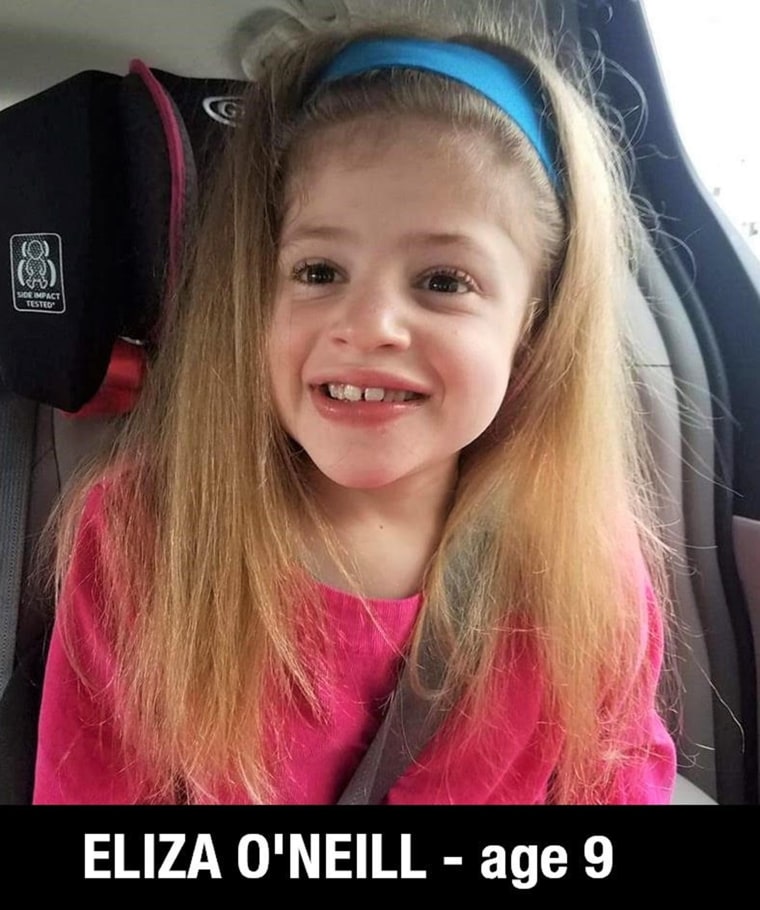It started with slight symptoms. But Sarah Stewart worried that her daughter, Mary Mitchell, then 2, wasn’t speaking like she should.
At first, doctors believed the girl had a sensory processing disorder but she didn’t respond to therapy.
“It was just subtle things,” Stewart, 36, of Knoxville, Tennessee, told TODAY. “The speech is probably the most obvious one. She can draw a circle but the other kids in her preschool can draw a circle with two eyes and a mouth.”

The Stewarts wondered if Mary Mitchell might be on the autism spectrum, but the pediatrician didn’t agree. He ran genetic tests and discovered the answer. Mary Mitchell has Sanfilippo syndrome, a rare genetic condition sometimes known as “childhood Alzheimer’s,” which affects one of 70,000 children. Those with the progressive neurodegenerative disorder lose their ability to speak and comprehend before becoming immobilized and dying in their teen years.
There’s no cure.
“We were shocked,” Stewart said. “We were in disbelief to be told it was something that effects her life expectancy and to be told on top of that there was no treatment.”
On the same day of Mary Mitchell's diagnosis, Stewart discovered another girl with the disorder, Lulu, who was receiving an experimental gene therapy for Sanfilippo syndrome. Stewart and her husband Mitch hope that treatment could help their daughter.
“We knew how big of a deal this gene therapy was,” Stewart said.
The treatment.
In Sanfillippo syndrome, also known as MPS3, a gene malfunctions so there’s less of an enzyme needed to break down complex sugars, which build up to dangerous levels.
There are four types A, B, C and D. A starts the earliest and is the most common. It’s the type that Mary Mitchell has.
Mary Mitchell is the second child to receive the therapy. It is a one-time treatment where a viral vector — which is harmless because the virus’ DNA is removed — delivers a properly functioning gene to the brain through six burr holes drilled into Mary Mitchell's skull by surgeons at Weill Cornell in New York City.
“The hope is that it will spread throughout her brain and it will cause her body to start producing this enzyme,” Stewart said.
The trial will follow 20 participants, receiving the therapy, for two years. Scientists will follow how their brains develop, their cognition, speech and motor skills.
Saving Eliza.
In 2016, Eliza O’Neill, then 6, was the first patient in the United States to receive gene therapy for Sanfilippo syndrome. After her diagnosis in 2013, her parents, Glenn and Cara O’Neill were so determined to find a cure that they started a nonprofit, Cure Sanfilippo Foundation, to raise money to fund research for it.
“We certainly care about children getting treatments, getting some type of treatment to halt the disease,” Glenn O’Neill, told TODAY.

Since her trial, Eliza’s lost her ability to speak but still makes noise to communicate. Even though her speech was lost, they continue to think her participation changed her life.
“The medicine has had a big impact on the quality of life, her ability to focus and sleep and not have inexplicable pain tantrums where she is going into spasms,” O’Neill explained.
Because Eliza was the first she received a smaller dose. The last children in the trial received about six times the amount of the therapy that Eliza received. There's not a lot of public information about the outcomes and O’Neill wonders how they’re doing.
Even though Eliza isn't cured, the family is grateful for her participation.
“We knew it was an unknown and we would do it again in a heartbeat,” he said. “The goal is that there will be something available for all kids.”
The hope for the future.
While Eliza still exhibits declining function, her family is hopeful the treatment was enough to stop the now 9-year-old from experiencing a steep decline in a matter of years.
“She is able to still use a fork and put a fork into whatever type of food she has and feeds herself. We are thrilled about that,” he said. “Everything she needs we still need to do for her.”
According to her Facebook page, Lulu, the girl who was the first to receive the latest gene therapy, is making gains. Her “cognitive age increased by six months,” and she is learning new words and phrases, a significant gain for the 5-year-old.
While it has been just a week since Mary Mitchell receive her gene therapy, her family has noticed differences. Her speech is much clearer and she is saying words she never before said.
“She’s also said so many new words, close to 15 to 20,” Stewart said. “It’s truly unbelievable.”

Mary Mitchell, who loves Dolly Parton so much she asked the nurses to play “Jolene” during appointments, left the hospital and will be soon be returning home. Because she's only 3 and hasn’t lost any skills her family hopes that the treatment will prevent her from declining, although they know it is certainly too early to know if it works. They believe God has helped Mary Mitchell thrive.
“We’re so excited and thankful,” Stewart said.
[Editor's note: An earlier version of this story said Eliza was the first to receive gene therapy for Sanfilippo. She was the first patient in the U.S.]